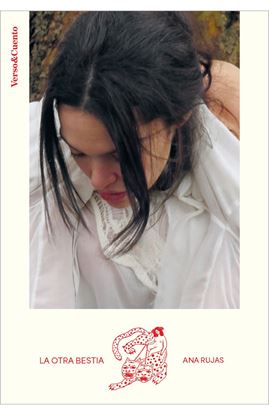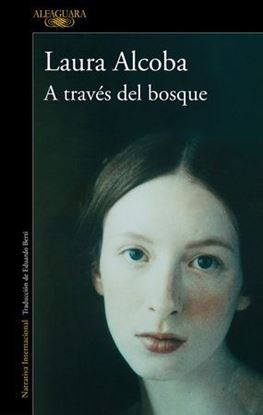

BACKSTAGE (MX)
Chelsea Cox parece tenerlo todo: es la popstar más famosa de su generación, tiene una voz única y Matthew, su novio, es guapo y talentoso. Aparentan ser la pareja ideal, pero pocos saben que detrás del brillo de la fama se esconde una relación tóxica y una peligrosa adicción a las drogas. Silenciosamente, esta adicción lleva a Chelsea a perder a la única persona que la ha visto sin su máscara… y también a perderse a ella misma.Sin embargo, una noche, cuando ya la esperanza la ha abandonado, aparece él. Él, con sus ojos verdes. Él, con su fama de ser el beisbolista de la década. Él, quien está a punto de perderlo todo. Isaac. Un hombre dulce y paciente que, mientras lucha con sus propios demonios, lo dará todo por ella.Después de una intensa atracción, de soñar con ser libre y de tener su vida llena de miles de rosas amarillas, Chelsea intentará descubrir quién es ella cuando ya no hay paparazis, quién es realmente cuando está en su backstage.
1,350
1,080
LA OTRA BESTIA
La otra bestia es la criatura que habita dentro de Ana Rujas, la que te mira detrás de sus ojos, con voz ronca y cuchillo en los dientes. Una bestia imperfecta que porta la piel de un toro y no pierde el aliento por gustarte, un laberinto de setos del que nunca te apetece encontrar la salida. Firma de fuego, plataforma creativa, marca personal, hidra de siete cabezas: la Otra Bestia es su alter ego, su letra escarlata, su sello propio. Nadie puede escapar de uno mismo. La feria de las catástrofes y de los milagros ha llegado a la ciudad. Pasen y vean.
1,350
1,080
A TRAVES DEL BOSQUE
Una fría mañana de diciembre de 1984, Griselda, argentina exiliada en Francia, se despierta con un fuerte dolor de cabeza. Tras pedir auxilio infructuosamente a Claudio, su marido, vuelve a casa, llena la bañera y ahoga en ella a sus dos hijos menores. La mayor, Flavia, de apenas seis años, se salva por hallarse en la escuela. Treinta años después, Laura Alcoba entrevista a los supervivientes de esta tragedia y, sin despejar el misterio del acto de Griselda, intenta acercarse a lo inconcebible. Preguntada sobre su madre, Flavia, que ahora es una exitosa fotógrafa, la describe como «presente, amorosa. Muy amorosa».
Tras la Trilogía de la casa de los conejos, Laura Alcoba nos brinda una narración deslumbrante y perturbadora sobre la oscuridad que se esconde en las relaciones más cotidianas y la posibilidad de apostar por el amor y el perdón.
1,350
1,080
HOTEL ABUEL
Hay un centro para mayores llamado Hotel Abuel. Lo frecuentan seis abuels que se juntan para pasar el rato, repiten frases e historias todo el tiempo y no se acuerdan de lo que comieron el día anterior (un kebab, por ejemplo). A pesar de tener más de sesenta y cinco años, adoptan costumbres millennials y Gen Z: hacen streams, se montan películas en su cabeza, tienen su punto gamer, adoran el chisme y, sobre todo, a pesar de su irrefrenable melancolía, desean gustar a los demás.
1,350
1,080
DIALOGO
Texto dramático que puede leerse como prosa o prosa que puede llevarse al teatro, "Diálogo" se estrenó en el Burgtheater de Viena en 2022. Imaginemos a dos actores, como Bruno Ganz y Otto Sanders, a quienes está dedicado el libro, ambos ángeles en la célebre película "El Cielo sobre Berlín", dos hombres ya mayores, amigos, cómplices, dialogando sobre la fuerza y la actualidad del teatro, sobre el hecho de envejecer, sobre los recuerdos y las vivencias que dejan una huella indeleble en la memoria... Texto rítmico, en la línea del último Handke, que rehúye las lecturas cómodas y uniformes; larga conversación, construida con una riqueza textual prodigiosa, que se abre paso mediante imágenes reveladoras, relatos del pasado y referencias a la propia obra, a la cultura popular y a la alta cultura. Y también, entre juegos de palabras y evocaciones evanescentes, hay espacio en "Diálogo" para la reflexión histórica y política, a propósito del relato espurio con que trató de nublarse la adhesión al Tercer Reich de los abuelos.
1,350
1,080
HOTEL CALIFORNIA
Damián huye de dos asesinos que lo persiguen en una solitaria carretera en el desierto. Logra eludirlos pero su automóvil se está quedando sin gasolina. A la distancia descubre un hotel que por fuera parece abandonado. Llama a la puerta y lo recibe Mercedes, una hermosa rubia quien lo invita a pasar. Por dentro el hotel es espectacular: cada detalle está cuidado a la perfección, pero hay algo sombrío que se esconde entre sus paredes y pasillos. Damián cree escuchar voces que mencionan su nombre, aunque las atribuye al estrés y su cansancio.
Nuestro angustiado protagonista vive una experiencia aterradora cuando intenta marcharse al día siguiente y suceden cosas inexplicables que se lo impiden. De pronto, Damián quedará atrapado en este lugar que cambia, que susurra, que nos hace dudar si está viviendo una pesadilla o si todo es producto de sus alucinaciones.
1,350
1,080














